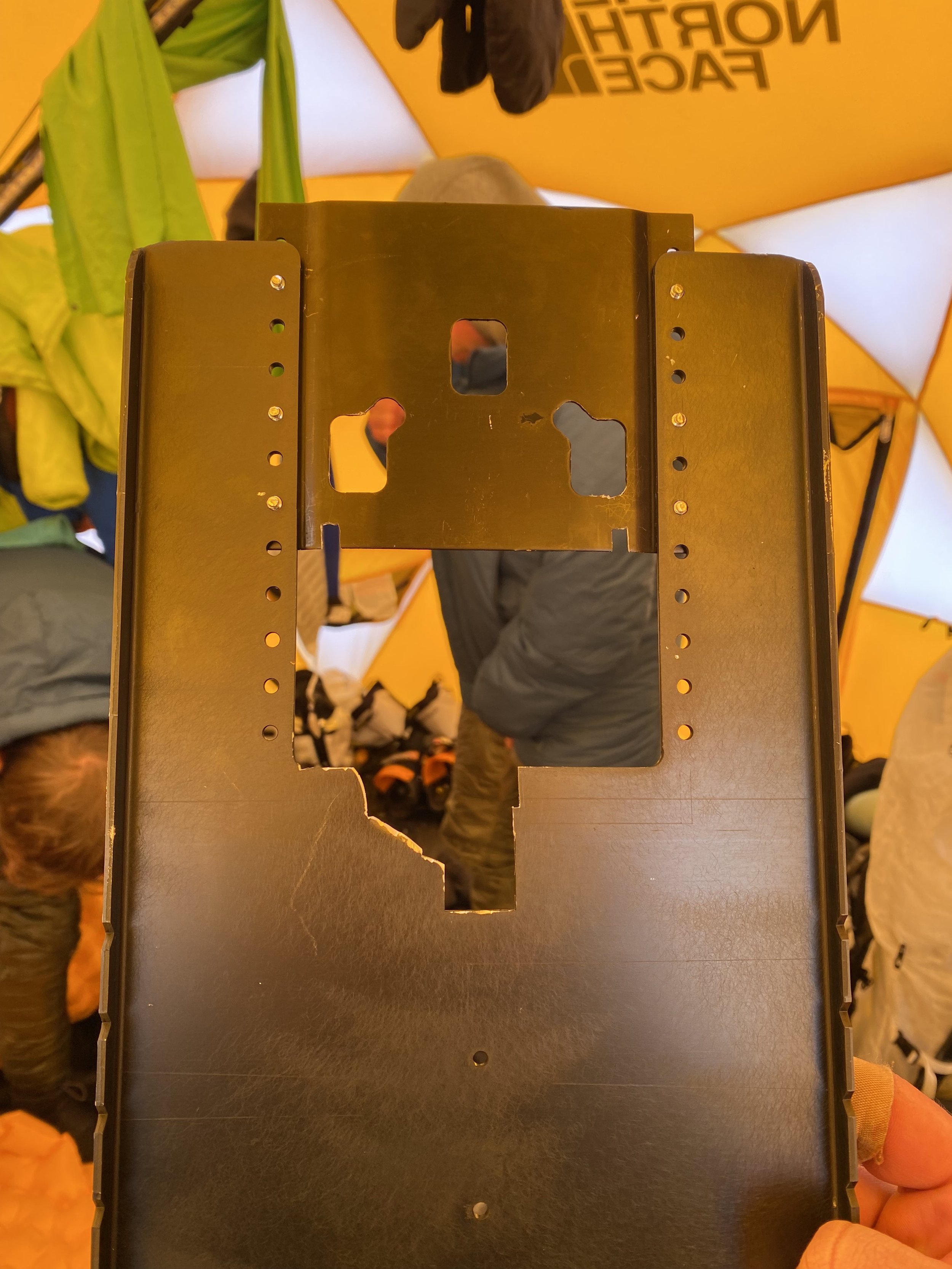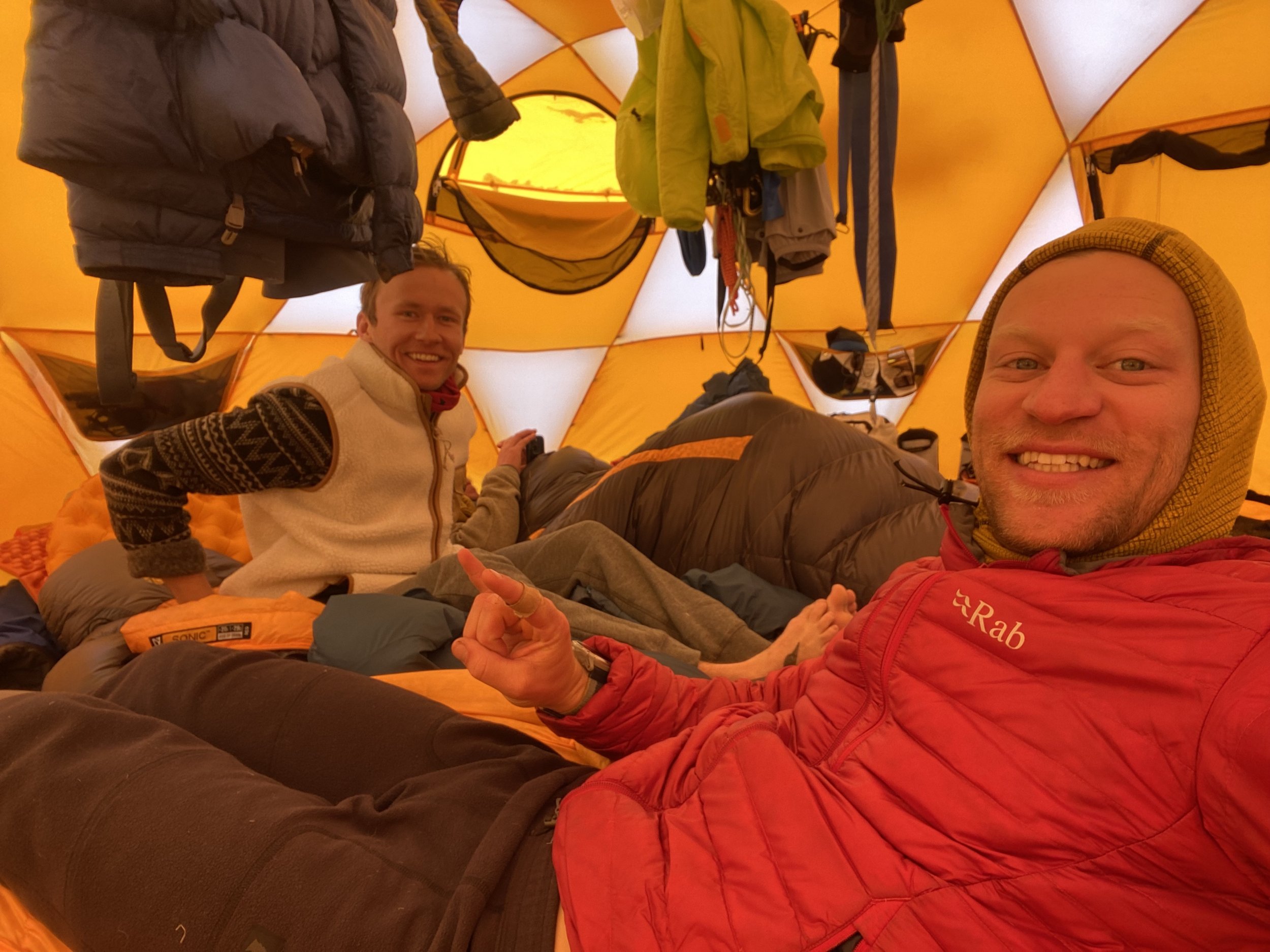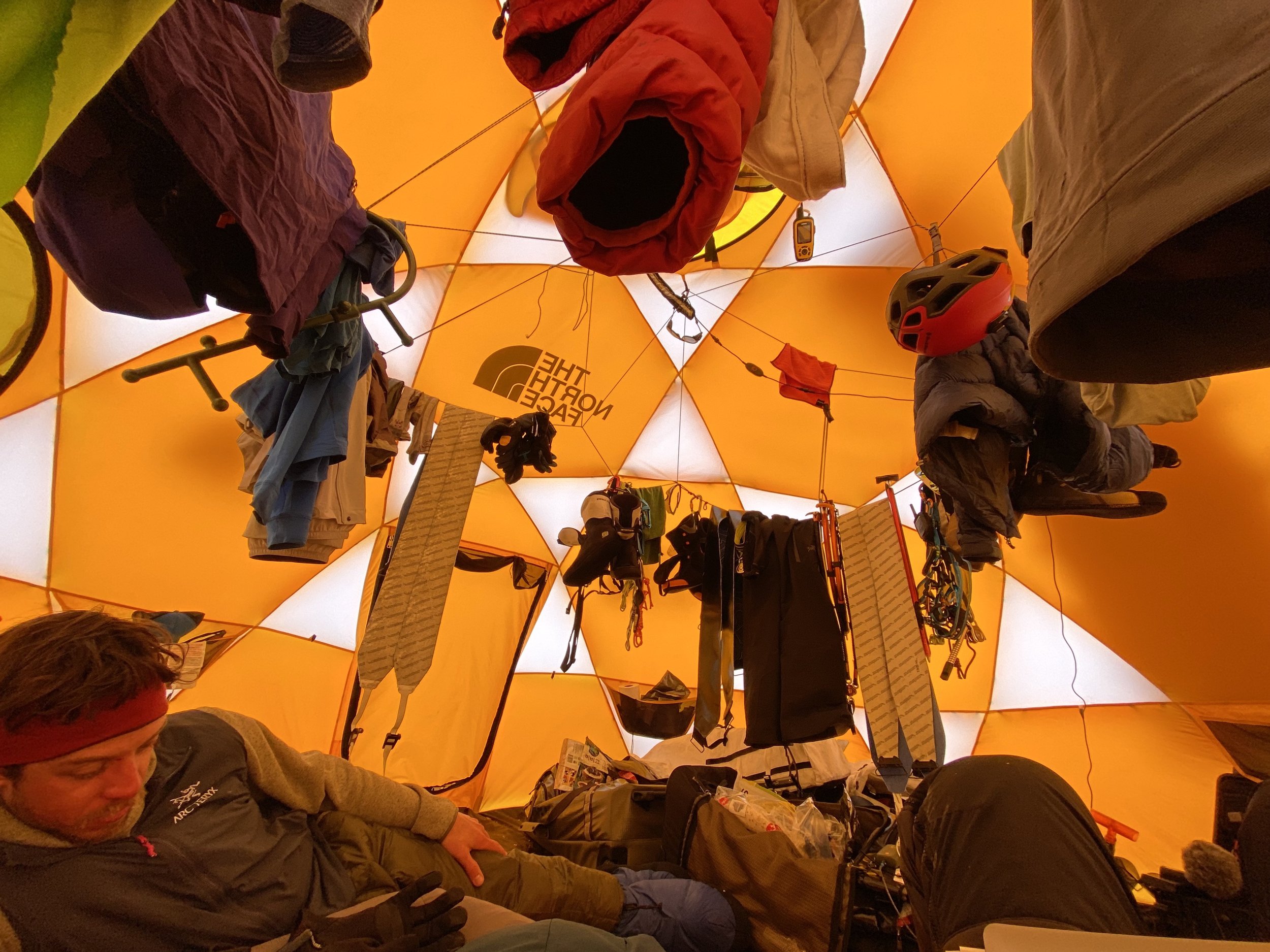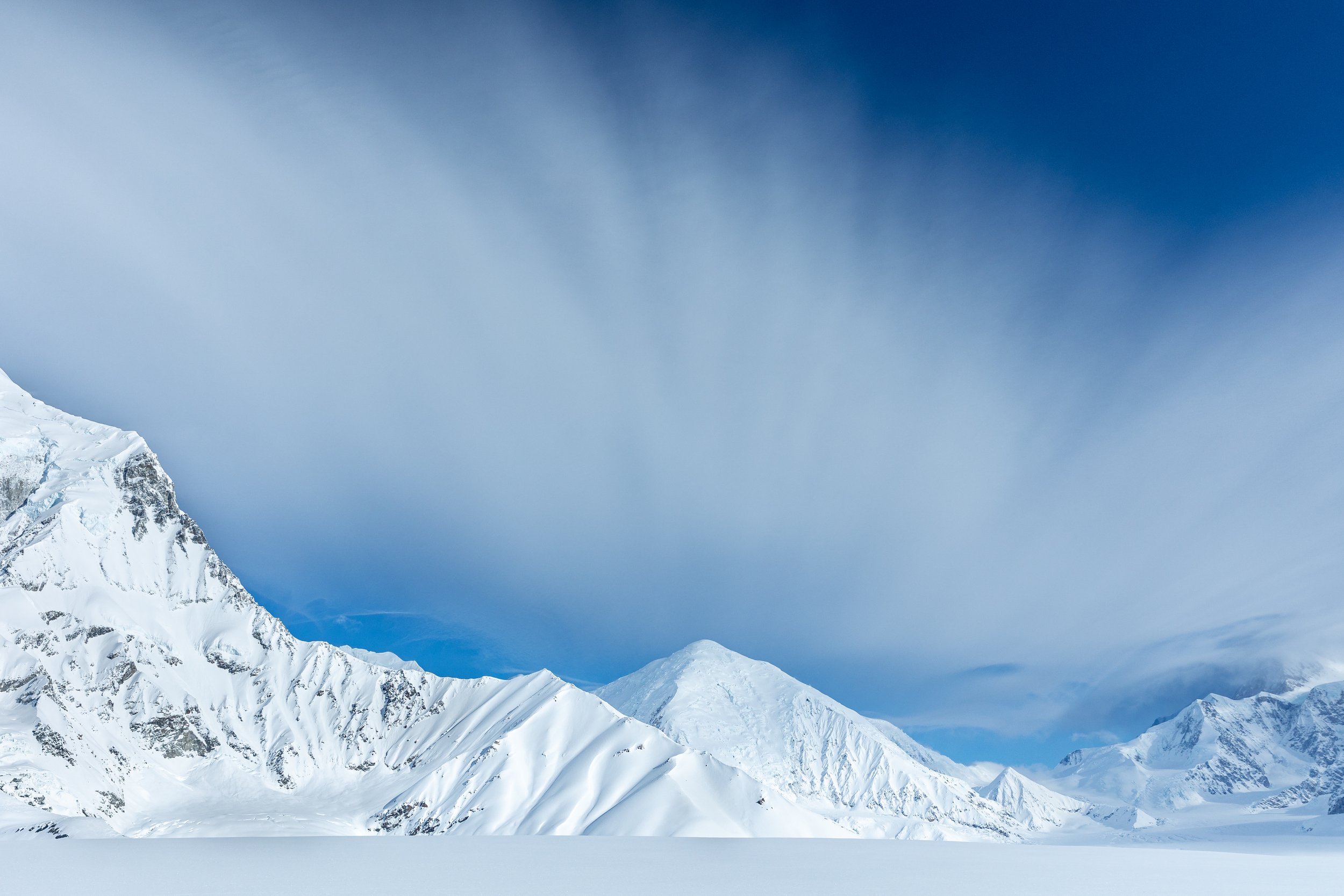“All too often expeditions have floundered in depression because they could not laugh at their misery.” Art Davidson



After a couple weeks back at home, I have been working to distill my synopses of various aspects of the trip as well as furiously editing photo and video from the trip— about 4TB worth of data. Myself, Jonny Morsicato & Connor Koch were all expedition partners on this trip and each has held a different role as any good expedition delegates: Myself covering all photo/video, Jonny covering a ton of trip planning, Connor also covering some trip planning as well as being our trip writer. I have included Connor’s brief trip coverage report below as an opener of this blog post, which is intended to cover my overall thoughts, hindsight improvement ideas and media sharing of the beautiful experience of our collective first Alaskan expedition. The full trip report and accounting (outside of our physical presentations) can be found here. I hope you enjoy my musings!
Jonny Morsicato & Connor Koch stand outside Nagley’s in Talkeetna, AK, the morning of the day we flew out to the Kahiltna. It was -5º at the time, a foreboding warning of the cold to come up higher.
Connor and Jonny sip coffee on the way to the TAT hangar. Denali looms in the background.
From Connor Koch:
“Our first expedition to the Alaska Range was, by the most important metrics, a success. Primarily, we lived, and returned in harmony with that old adage, something about ‘come back stoked, come back friends, come back, in reverse order.’ The skiing was excellent, featuring deep powder, new storm snow, and firm, technical first descents on nearly every aspect and angle. We did not see other human beings for our entire 14 days on the glacier. This is a new record streak for me, and one I hope to extend, no offense to the reader. Cold was a magnificent menace on our trip, particularly in the opening stanza, where our 90 proof whiskey turned to slush. Regretfully, I report the dereliction of duty of my circulatory system, and the consequent removal of the distal 20% of my right middle toe. It had a wondrous 29.5 years, as much as any toe end could reasonably ask for.
Wispy cirrus clouds outline the start of Sultana (left) Mt. Crosson (middle) and Denali (right) in the Central Alaska Range, April 2023.
Nearly everything broke or was badly maimed by the extreme conditions, including but not limited to:
Mitchell’s ski* boots (both)
Jonny’s puffy mitt, which had a close encounter with the stove
The stove
My right contact
My iPhone
2 camera lenses
Literally anything with a battery
Snowboard binding
All 3 lighters
Our olive oil (referred to fondly as “olive block”)
Melting water for the simple purpose of living was an enormous undertaking, one which consumed over 50 hours of our time in the range. That’s a full work week for you commuters out there. On the, ahem, other end, we filled 4 NPS cans with human waste, and I only fell in the snow with my pants down once. One 60-hour stretch found us tent bound and eating icy burritos. This was not as bad as it may sound. The second storm was passed with a pound of hummus, many Oreos, and a matinee showing of Lord of the Rings: Return of the King.
We were involved in one minor slide. Many hotel-sized seracs did their best to calve and kill us, but all that tried failed miserably. I like to think they were intimidated by our obviously quite high testosterone levels. Despite all this, and because of all this, we continue in style. Thank you to our sponsors and ever patient friends, family, and girlfriends. And to the Alaska Range - we’ll see you next spring.”
_____________________________________________________________________________________
Ahhh, yes… tent bound with icy burritos… I remember like it was only 2 weeks ago! Many referred to our initial Alaska expedition with trepidation as we decided to do it early April in a more remote, infrequently trafficked zone of the Central Alaska Range. The quickest translation to both of those is: cold and uncharted. Two extra factors of potential issues to add into a compound stack of existing problems to solve— camp placement/building, water melt and food prep, keeping gear dry, stills/motion production management, crevasse/serac/avalanche avoidance, and so many more things that would come up. Staying alive is a full time job on expedition. We, needless to say, were joyously naive about the cold incoming to us and hungry for adventure: two ingredients needed to accept the weariness of all that warned us. Overall, as Connor spoke to above, we had an ultimately successful mission and we feel all the more prepared for what adventure are to befall us in the future. The cold, not to be underestimated, definitely was the most difficult issue to manage. The cold, I’m talking -20º/25ºF or more ambient (& before the wind) and rarely breaking 0º even in the sun, begins to ruin everything you have as well as cost you more in time and fuel when melting snow/ice for water or heating food. It will take your fingers, toes, batteries and ability to get out of your sleeping bag away from you faster than car thief in San Francisco can smash a window. Overall, we feel we managed the cold as well as we could for a first time expedition group. We had some problems getting our MSR stoves started, however we learned that it needed some white gas to be poured directly into the stove bowls before they would work as intended— we learned this lesson pretty hard on night one at about 11pm when the last light of the day had finally disappeared and the temps began to bottom out below what most mercury thermometers will read. We also learned pretty quickly that the footwear we bought— mainly ski boots and down camp booties would not be adequate for the cold of that caliber. This applied less to ski boots and more to the camp booties. All of us struggled to keep our feet/toes warm enough. We would all bring thicker and taller insulated boots next time. Only minor frostbite was sustained by Connor.
Begguya, meaning "Denali's Child” sits at 14,573ft roughly 8 miles South of Denali.
We originally wanted to fly into the Yentna Glacier, but we were warned of its potentially abnormally high dryness. On our flight in, we flew over to check it out and what was rumored was true— the Yentna was dry as a bone. We made a quick pivot over a few glaciers to a more obscure SW fork of the Kahiltna below Sultana (Mt. Foraker) and in perfect view of Denali. We proceeded to not see another soul for the next 14 days. We were able to explore in depth the little corner of heaven we had been placed in and we likely put in many first descents. You can read more in depth into this through Connor’s trip report located here.
My camera gear and associated batteries held up wonderfully given conditions— I did have one lenses communication issue unfixable in the field. The gear that came out was my Canon EOS R6 and Canon C200 with the EF 24-70ii f2.8, 70-200ii f2.8, Sigma 14-24 f4, Sigma 18-35 f1.8. I bought 4 batteries for each camera, including 98Wh Core Nano BP-A60s & 98Wh Gold Mounts for the C200. Also in the field was a stack of PolarPro filters/matte box systems, both for motion and for stills, as well as my trusted Sachtler Flowtech tripod, MacBook Air for media organization and 5TB of backup drives. The lens issue in the field was a 24-70/R6 Err 01 comms issue. The C200 had 2 builds, 1 fully loaded for camp use (Shinobi 7” monitor, 1TB CFast/SSD, Rode MTG 4 Shotgun, GM Battery Plate and SmallRig top handle) which all stripped off quickly and efficiently to make a slimmed & lighter-weight field rig. The Core Nano BP-A60 batteries came in super handy for this. The Shinobi absolutely hates the cold and would function very poorly in the low ambients. Everything else worked beautifully and captured everything that I intended to. As is custom, all batteries nightly went into the foot box of my sleeping bag— almost 14 nights cuddling them! I would be remiss if I didn’t talk about how I keep gear charged and powered on this expedition— I wrote another post about that already which can be found here.
It was seriously frigid when I took this photo. Starting to capture the goods!
If you, the reader, have any questions about other gear I carried, feel free to shoot me a note.
A quick note about certain items that I/we wished we’d had or that could be improved on future expeditions…
Below is a list compiled by all of us:
Mini broom/dustpan - we didn’t bring one for the tent. An avoidable mistake!
Cooler - Used for the opposite purpose, keeping foods from hard freezing as well as a good food storage bin
Paper towels - Glacier camping is similar to car camping, getting flown in and all. We made a mistake in not bringing these.
Muck boots/sorels - as noted above, our feetsies were colder than they probably had to be.
Camp shovel - useful for not subject your any shovel to the snow and ice, making it much harder to breakdown and put away. Also, they are not nearly as ergonomic is as needed to build a full camp
Kitchen zlites - standing on the snow with our thin down booties was brutal. Standing on zlites made it easier to tolerate given the higher increase of insulation. We would bring more next time.
More pack towels for condensation management - it’s gonna happen in your tent, nice to use them to wipe away everything before it begins to rain on everything you have in there.
On the food side:
2x XL chip bags, minimum
2x peanut buttery snack mix
1lb/person/week coffee
Coffee creamer
Big thermos for keeping hot water hot as long as possible
Below is a list specific to me:
Down blanket x2, one for me, one for camera systems - Condensation management for cameras and lenses is a real challenge. Wrapping them in something insulated would help to protect from this. Plus, an extra down blankets over the sleeping bag for those extra cold nights is advisable.
Small table for cameras - this one is optional-ish, but if weight and space provides, its could be quite helpful
Longer sleeping bag - remember, you are cuddling with lots of batteries, nalgenes, inreaches, phones, and more. More space is better, ideally.
USB string lights - We had these, and they kicked ass until the last day when the cold and a little jarring movement snapped the connector. I need some personally for future trips.
Individual regular wipes - I used individual facial wipes (you need individual to let me unfreeze in your pockets) but I could have used some general ones too for other areas, if you catch my drift.
Toe warmers - we had these, but I would bring more next time. They also double as great pocket battery heaters.
Individual lens cloths - once it’s used, it’s used. Toss and open a new one!
Individual sensor wipes - This would have been super useful. Your sensor cleanliness will save you SO MUCH TIME on the back end, I’ve never seen my sensor so dirty before this trip.
Second camera body— a bit of a duh, but sometimes there is only some much $$ to go around. The R5C is on my short list due it being able to function as both a stills and a pocket cinema camera.
MVPs of the trip, in no particular order:
CAMP USA Hot Mitts
Dakota Lithium Powerbox 135 + Solar 180
BGT Ascent Plates - though I had to do some folding mods on these in the field to get them to work properly with my more technical crampons. We also paid full price for these and would recommend them 1000%.
Air support by Talkeetna Air Taxi - the best in the business. These sort of trips, initial beta, route intention/discussion and overall execution would not be possible without them.



Other thoughts:
It’s a really fun/distressing feeling shivering in a -20ºF sleeping bag knowing you have little other recourse if it gets colder. Ha.
We are grateful to have been able to borrow a plywood “tabletop” just before flying out. Those are critical and make all the difference.
We burned through 2 gallons of white gas for 3 people for just about 2 weeks out. If I could draw a graph of burn rate, it would show a heavy burn rate through the initial cold snap that eventually tapered off to a reasonable rate as the temps rose. That was interesting real world learning. Even though we had an extra gallon, we all would bring more next time just in case we remained in a prolonged cold snap.
A bigger compiled list of individual gear (not a complete list by any means) is available here.
Sponsors:
A lot of work goes into expedition like these— it’s always difficult to see that from the outside. Separate from the work, they also cost money— generally lots of it. We had some amazing sponsors for this trip, some monetary, some gear and some of both. I want to extend a special thank you to our sponsors below in no particular order:
Packs and shelter by Hyperlite Mountain Gear
Expedition Solar Power by Dakota Lithium
Poles by Folkrm
Goggles and optics by Opolis
Radios by Rocky Talkie
Skis by Moment
Splitboard by WNDR
Technical equipment by CAMP
Skins by Contour
Breakfast Food by HOLOS
Snacks by SANS and Skratch Labs
Closing Thoughts:
The magnitude of the Alaska Range, and most mountains in Alaska, is unparalleled in the lower 48, outside of a few very specific places. Not matter how much mountain prep you do, nothing will prepare you for the scale and the severity. Living in the Sierra Nevada, I believe we have some of the closest terrain and conditions— but I was still floored when I got there. You don’t realize how much your mental energy is applied towards taking in the scale of it, managing the risk at the scale provided and completing all other tasks that require you to sustain life out there. This last couple weeks has been an excellent decompression filled with bewilderment and understanding.
At home decompression session reading Art Davidson’s -148º: First Winter Ascent of Mt. McKinley. I still find myself amazed that, nearly 80 years later, we are still dealing with the same problems. Technology has advanced, but the experience remains true to form.
I’m so grateful to have been able to complete a trip like this with my good friends. It’s an incredibly special experience that took years of honing my crafts, both in the mountains with skiing/rescue work and with my camera work. It’s a true dream to get to operate both alongside incredibly talented mountain athletes. It’s a truly ethereal experience getting to be in such a magical range with such a storied history in many respects, but still full of exploration and untapped knowledge in lots of others. We visited the NPS station in Talkeetna after our trip to give them a quick recap and most of the rangers congratulated us on our exploratory spirits, many of them not having heard or seen of the descents we did and were enthralled with the zone(s) we explored. That’s a real special feeling. The Alaska Range has reignited an internal flame that has burned deep within me ever since the my first mountain memories. I cannot wait to return.













